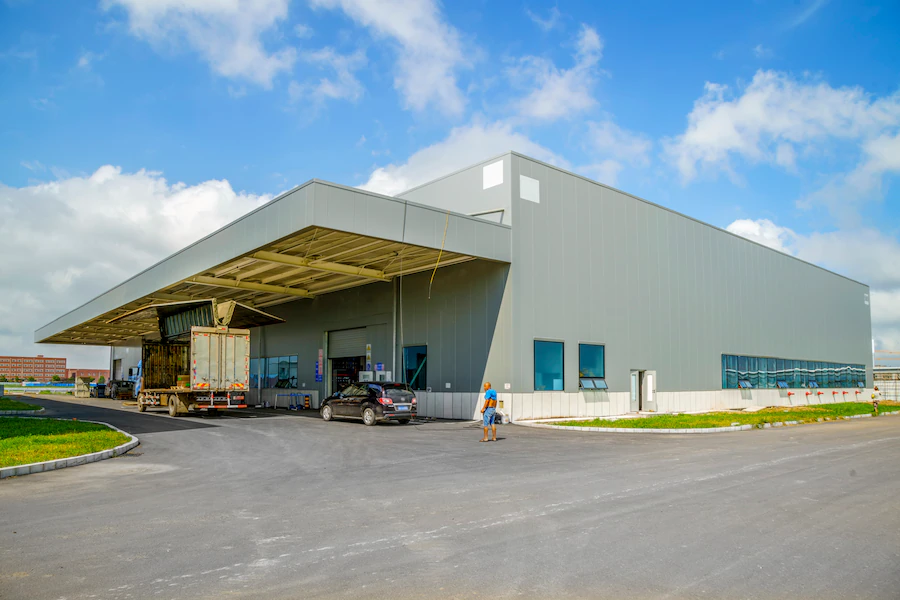Improving Storage Within Your Warehouse
- 1 Improving Storage Within Your Warehouse
- 1.1 1. Assess Current Storage Utilization
- 1.1.1 Space Utilization Rate
- 1.1.2 Pick Rate
- 1.1.3 Turnover Ratio
- 1.2 2. Optimize Warehouse Layout
- 1.2.1 Vertical Storage Solutions
- 1.2.2 Slotting Optimization
- 1.2.3 Zone-Based Storage
- 1.3 3. Invest in Advanced Storage Systems
- 1.3.1 Automated Storage and Retrieval Systems (AS/RS)
- 1.3.2 Pallet Racking Systems
- 1.3.3 Mobile Shelving Systems
- 1.4 4. Implement Lean Inventory Management
- 1.5 5. Enhance Inventory Tracking and Management
- 1.6 6. Prioritize Safety and Ergonomics
- 1.6.1 Safety Training
- 1.6.2 Ergonomic Equipment
- 1.6.3 Clear Signage and Pathways
- 1.7 7. Regularly Review and Adapt Strategies
- 2 Conclusion
When operating or running a warehouse, you must focus on several areas to ensure smooth daily operation. One of these areas is storage because if you do not have the right storage systems in place, your warehouse will struggle to be efficient or productive. So, when it comes to updating storage, what should you focus on?
Improving Storage Within Your Warehouse
1. Assess Current Storage Utilization
Before implementing changes, conduct a thorough assessment of your current storage utilization. Analyze the layout, identify underutilized areas, and evaluate how goods are stored. Key performance indicators (KPIs) like space utilization rate, pick rate, and turnover ratio are used to identify inefficiencies.
Space Utilization Rate
This KPI measures the percentage of warehouse space used for storage. Aim for a high space utilization rate while maintaining accessibility and safety standards.
Pick Rate
The pick rate measures the speed at which items are retrieved from storage. A high pick rate indicates efficient storage and retrieval processes.
Turnover Ratio
The turnover ratio indicates how often inventory cycles through the warehouse. A high turnover ratio suggests efficient inventory management.
2. Optimize Warehouse Layout
The layout of your warehouse significantly impacts storage efficiency. Consider the following layout optimization techniques:
Vertical Storage Solutions
Maximize vertical space by installing taller storage units and utilizing mezzanine floors. Vertical storage not only increases capacity but also keeps the floor area uncluttered.
Slotting Optimization
Slotting involves organizing inventory based on demand, size, and weight. To reduce pick time, place high-demand items in easily accessible locations. Group similar items together to streamline the picking process.
Zone-Based Storage
Divide your warehouse into zones based on product categories, order frequency, or storage requirements. Zone-based storage enhances organization, reduces travel time for pickers, and improves inventory management.
3. Invest in Advanced Storage Systems
Modern storage systems can significantly enhance warehouse efficiency. Consider investing in the following technologies:
Automated Storage and Retrieval Systems (AS/RS)
AS/RS are computer-controlled systems that automatically place and retrieve items from storage locations. These systems improve accuracy, speed, and space utilization.
Pallet Racking Systems
Pallet racking systems, such as selective racking, drive-in, and push-back racking, offer flexible storage solutions for various goods. Choose the system that best suits your inventory characteristics and operational needs.
Mobile Shelving Systems
Mobile shelving systems are designed to eliminate fixed aisles, increasing storage capacity by up to 50%. These systems are beneficial for small to medium-sized warehouses.
4. Implement Lean Inventory Management
Lean inventory management aims to reduce waste and improve efficiency. Fundamental principles of lean management include:
Just-In-Time (JIT) Inventory
JIT inventory minimizes excess stock by ordering goods only when needed. This approach reduces storage requirements and minimizes the risk of overstocking or obsolescence.
Continuous Improvement (Kaizen)
Encourage a culture of continuous improvement by regularly reviewing and refining storage processes. Involve employees in identifying inefficiencies and suggesting improvements.
5. Enhance Inventory Tracking and Management
Accurate inventory tracking is crucial for effective storage management. Implementing advanced inventory management systems can streamline operations and reduce errors.
Warehouse Management System (WMS)
A WMS automates inventory tracking, order processing, and warehouse operations. It provides real-time visibility into inventory levels, locations, and movements, enabling more efficient storage and retrieval.
Barcode and RFID Technology
Barcoding and RFID (Radio Frequency Identification) systems enhance accuracy in inventory tracking. These technologies speed up the scanning process, reduce human error, and provide real-time data on inventory status.
6. Prioritize Safety and Ergonomics
Safety and ergonomics are vital for maintaining a productive and compliant warehouse environment. Implement measures to ensure the safety and well-being of your employees.
Safety Training
Conduct safety training sessions regularly for warehouse staff. Ensure they are aware of safe lifting techniques, emergency procedures, and the proper use of equipment.
Ergonomic Equipment
Invest in ergonomic equipment, such as adjustable workstations, anti-fatigue mats, and lifting aids. Ergonomic tools reduce the risk of injuries and enhance employee productivity.
Clear Signage and Pathways
Mark pathways, storage areas, and emergency exits. Ensure that aisles are free of obstructions and that items are stored securely to prevent accidents.
7. Regularly Review and Adapt Strategies
Warehouse operations are dynamic, and continuous improvement is essential. To remain competitive, regularly review storage strategies, assess performance metrics, and adapt to changing demands. Stay informed about industry trends and emerging technologies.
Conclusion
Improving storage within your warehouse involves strategic planning, technological investment, and continuous improvement. You can significantly enhance storage efficiency and overall operational performance by assessing current utilization, optimizing layout, investing in advanced systems, implementing lean inventory management, improving tracking, prioritizing safety, and regularly reviewing strategies. As the logistics landscape evolves, staying proactive and adaptive will ensure your warehouse meets the demands of a fast-paced, customer-centric market.

















